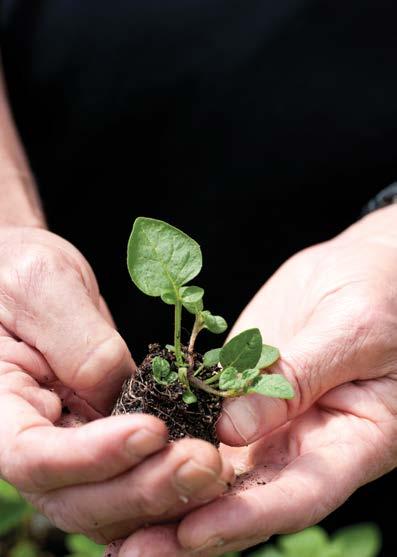
2 minute read
Striving for reliable results from residue testing
STRIVING FOR RELIABLE
RESULTS FROM RESIDUE TESTING
Sally Anderson : Market Access Solutionz Ltd
Residue testing of agrichemicals on crops is important for growers to ensure they meet regulatory requirements around maximum residue levels (MRLs) for agrichemicals. Compliance with residue limits of agrichemicals can be a significant risk, so it is important for growers to understand how reliable residue tests are, and what growers can do to ensure that the samples sent for residue testing will provide as reliable results as possible.
In 2021 the Vegetable Research and Innovation Board undertook a trial to compare New Zealand analytical laboratories with the aim of finding out how consistent the results of residue analysis were between them. The trial involved collecting samples of two vegetables (pak choi, and tomato) that had known insecticides and fungicides applied to them shortly before harvest. All samples of each vegetable were taken from the same plot. Two samples of each vegetable were sent to each of the three main laboratories that undertake residue analysis in New Zealand. This allowed for a comparison between laboratories, as well as an assessment of how consistent results were from each laboratory, as the samples should be the same or very similar in terms of their residue profile. Results were mostly consistent within each laboratory, in that residues reported in one sample, were similar to that reported in the matched sample sent to the same laboratory. However, there was more variation between laboratories than originally anticipated. Differences between laboratories varied depending on the active and the crop, but in the most extreme cases, reported residues were more than ten times greater from one laboratory compared with another, for the equivalent vegetable samples. The laboratories were subsequently approached for guidance. The advice received from the laboratories was that variability in residue results was within the margin of error of their testing. General feedback was that each laboratory stood by their own testing methodology, and the level of variation observed was not significantly greater than would be normally expected.
VERSION 1.0 | AUGUST 2022
Nonetheless, because variability in results can have significant consequences for growers in terms of crop acceptance or rejection, as well as compliance issues, the Vegetable Research and Innovation Board has created a sampling protocol for growers, to help minimise potential variability that may arise through the field sampling process. This guide instructs growers on: • how to achieve a representative crop sample, • specific requirements for particular crops, such as how large a sample size to collect • best sanitary practice to avoid contamination between samples and/or crops, and • what to do if you receive a residue result that doesn’t comply with an MRL.
This guide can be obtained online from the Vegetable Research & Innovation website at https://www.vri.org.
nz/research/new-research-document-page-88/
For any further queries relating to this residue testing, please contact your product or commodity group manager.










